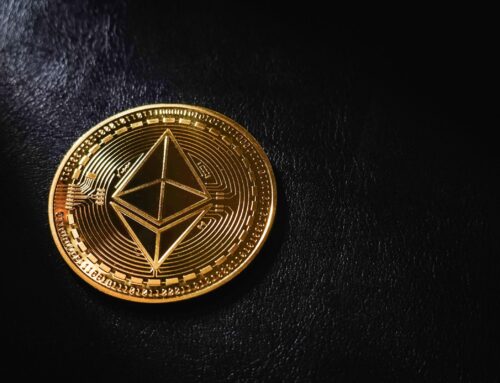The Best Part of Amy Sherman-Palladino’s New Show May Also Be the Worst
April 25, 2025
Amy Sherman-Palladino—creator of the beloved comedy-drama series Gilmore Girlsand The Marvelous Mrs. Maisel—is back with a new series for Prime Video: Étoile. Following in the footsteps of Bunheads, Sherman-Palladino’s 2012 ballet show turned canceled-too-soon cult classic, Étoile—French for “star”—takes us back to the barre. The series follows the staff and dancers of two fictional world-renowned ballet companies based in New York City and Paris, respectively, as they initiate a publicity stunt in the form of an overseas talent swap. Co-created, like always, with her husband and working partner Daniel Palladino, Étoile doesn’t skimp on the Sherman-Palladino trademarks, like fast-paced dialogue filled with pop culture references, as well as themes of family and ambition. But it’s the other trademark of the showrunners that makes the show enjoyable: the corps of quirky characters—and that’s largely due to one wacky character in particular, Crispin Shamblee (played by legendary English actor Simon Callow). There’s only one problem: We’re supposed to hate him.
Étoile’s premise starts with Sherman-Palladino bringing a real-world problem to the screen: Ballet is struggling. In our reality, major cities are cutting funding to the arts, which is no help after the pandemic had already set ballet companies back by miles. It’s no surprise that Sherman-Palladino, who herself diverted from a career as a professional dancer to pursue television writing, would create a show based on the issues plaguing the industry of her second love in life. Though Étoile has a true ensemble cast, its plot is mainly grounded by Jack (Luke Kirby), executive director of the Metropolitan Ballet Theater in New York City, and Geneviève (Charlotte Gainsbourg), interim director of Le Ballet National in Paris. Both struggle to keep their companies afloat—a bad omen not only for their careers and those of hundreds others, but also for the centuries-old classical art form. So Geneviève suggests to Jack that they do a talent swap—in which they will send some of their best dancers, choreographers, and conductors from New York over to Paris and vice versa (something that, in a way, really did happen, though the Palladinos told Vanity Fair that they weren’t previously aware of the real occurrence)—hoping that this move will generate publicity and increase ticket sales. But the one wrinkle to this plan—outside of the classic Sherman-Palladino interpersonal drama—is the question of money. Where are they going to get the funds to finance the swap and the press rollout it will require? Enter the incorrigible billionaire Crispin Shamblee.
Just like his name sounds, Crispin Shamblee is all flair and quirk when we first meet him. He’s a hopeful patron of the arts and a die-hard ballet fan, making him a perfect benefactor of this stunt. That is, until Jack balks at the idea of taking blood money from Crispin, who apparently makes his fortune via selling weapons, war profiteering, and chemical manufacturing that is actively polluting the earth. Crispin’s love for the ballet is real—he’s got the bona fides and the knowledge to prove it—but so is the fact that funding the swap will give his harmful business dealings some good PR cover. (It is no shocker, then, when it is revealed minutes after meeting Crispin that this whole idea was his own.) Jack—who has been fielding questions about the company’s lack of resources since Étoile’s opening minutes—is dead set against the idea until he overhears some of his dancers talking about a lack of company-supplied pointe shoes. Realizing the future of the entire company is at stake, he caves.
You could appropriately theorize, like the Daily Beast’s Caroline Siede does, that Crispin’s character is perhaps a way for the Palladinos to “vent” about the fact that they are making art for Amazon. While Jack and Geneviève are dealing with the very real question of weighing the importance of art against accepting money from shady billionaires to fund it, Crispin’s presence in Étoile gives the audience another question to ponder: How much are we allowed to like the Bad Guy? Because, let’s face it, Callow’s performance as Crispin Shamblee is one of the standout comedic performances in a series that, at times, struggles with its actual comedic beats. It is unsurprising, given the callous nature required to amass his fortune in the ways he has, that Crispin is flamboyantly carefree. However, that means we get to see him be a delightfully carefree force onscreen. He tells Geneviève to call him “Crispy,” because he always wanted people to call him by his nickname, and he amusingly dons spandex and terrycloth headbands to show up for a dance class with the academy’s ballet dancers. Relatably, when someone tells him to leave, he responds that leaving would be embarrassing because he would have to retrieve his water bottle from all the way across the dance studio. Later, when Crispin shows up bruised and tatter-clad to Jack’s swanky birthday party, he explains that he’s just survived what he hilariously calls “a taking.” When Jack and Geneviève appear confused, he clarifies that it’s exactly as it sounds, despite his absolute nonchalance: He was just kidnapped, and all it’s left him is terribly hungry for the party’s hors d’oeuvres.
It isn’t until one of his oil tankers causes a massive, debilitating oil spill in the series—a PR nightmare that Geneviève struggles to handle—that we are reminded of the downside to his bubbly appearances: that there’s real harm at the end of his unconcerned charm. Crispin may be an entertaining addition to any scene, but many of his gags have a darker underbelly. There’s the lighter way he creates harm—for example, he predictably uses his funding as leverage to get any creative decisions he desires greenlit, over Jack’s or Geneviève’s protests. And then there are the more direct ways that even his humorous moments showcase his injurious gall. At one point, Jack shows up to meet Crispin at a restaurant, only to find that Crispin has hired lookalikes to pose as him and follow him around, so that if the perpetrator behind some increasingly severe threats to his life actually tries to do something, they will likely capture or harm a fake Crispin instead of the real one. Watching Jack walk up to two different Simon Callows before finding the actual Crispin is funny, but it’s not lost on the audience that this hilarious character, uncaring toward human life in many regards, has effectively paid for human shields.
Étoile is by no means a slog. It’s not perfect, but I did enjoy the (surprisingly few) dance numbers and the other delightfully idiosyncratic characters dotting the story, from the somewhat technophobic mother of one of the French dancers whose entire apartment seems to operate solely via Rube Goldberg–type machinery to the star choreographer who is a genius at the arts but a neophyte at social cues. But Crispin is not only the most fun character across these eight episodes, he’s also the most necessary. Tons of art—good art, at that—is funded by sketchy tech billionaires who manufacture tons of waste, drag their feet when it comes to legislation that’s good for consumers and the environment, and otherwise support (or directly make their money off of) harmful practices. Even while trying to hold these billionaires accountable, many of us continue to consume the art that their money helped create; it’s a perilous cultural relationship with no easy solution. For Étoile, Crispin presents a moral quandary for artists and art lovers watching, just as much as he acts as a receptacle for all of Jack and Geneviève’s frustrations and blame in the actual story.
Still, I can’t tell whether it’s a failure or a success that he’s so damn likeable. On one hand, I like the reminder that maliciousness in life can come in fun packaging. On the other hand, it’s a little worrisome that the character we should be the most skeptical of is the one who keeps me coming back to a series I otherwise don’t feel that attached to. Still, if Étoile is one big ballet, Crispin Shamblee is the grandest grand jeté I can’t look away from, even while bracing for the impact of its tricky landing.
Search
RECENT PRESS RELEASES
Related Post



